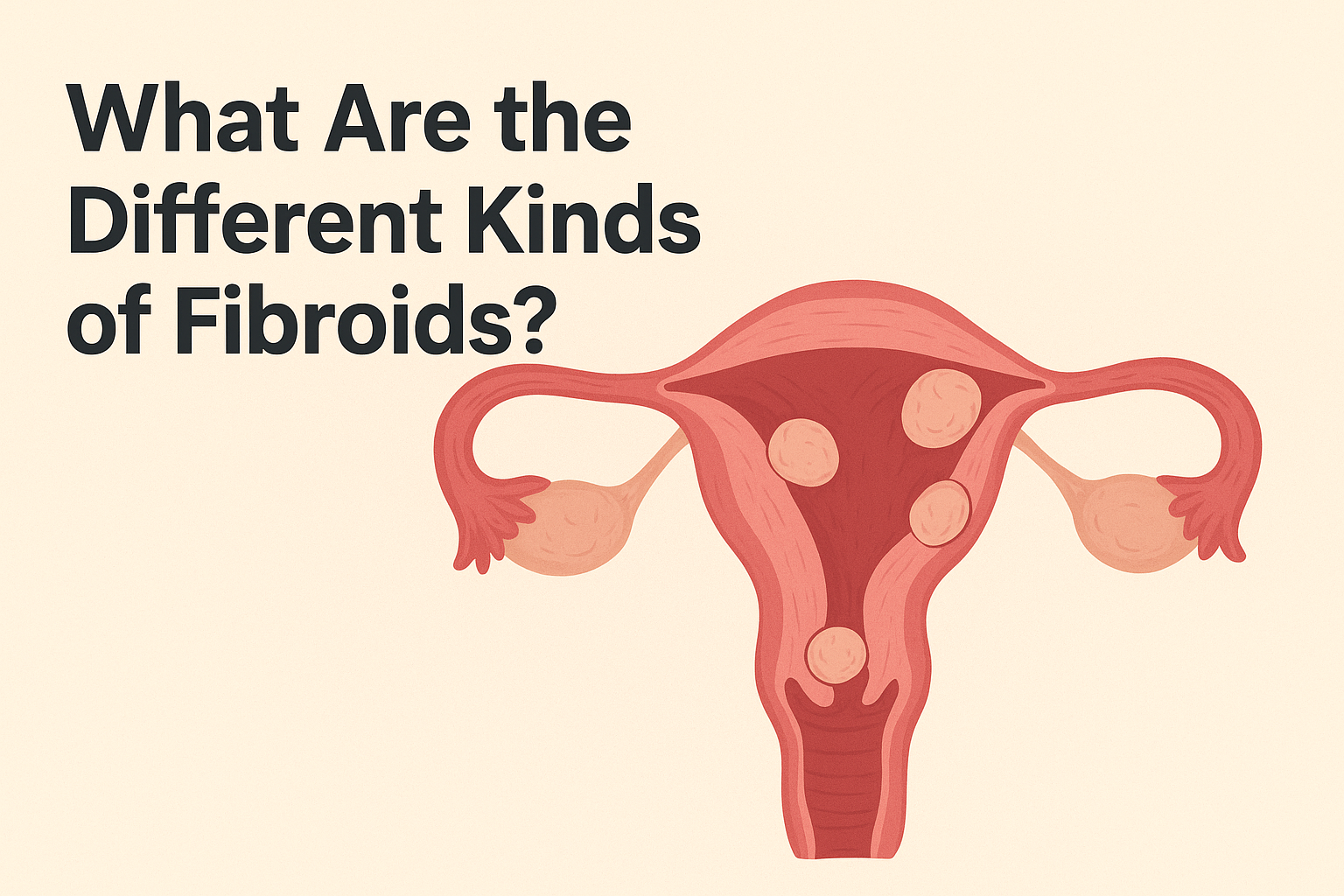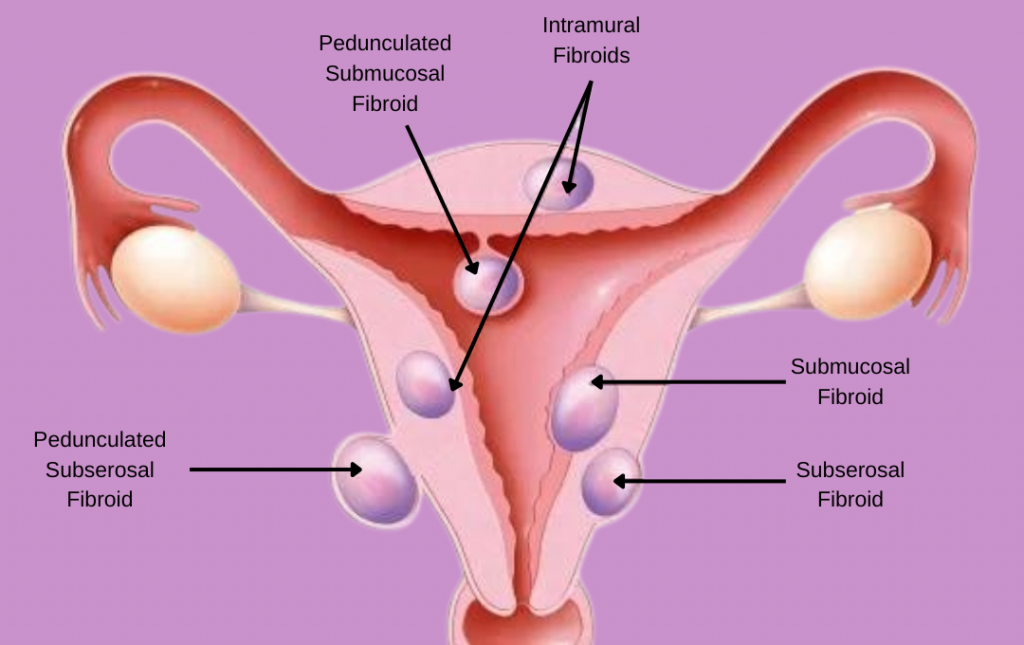
Fibroids are far more common than many people realize. These noncancerous growths can appear in or around the uterus and affect women in unique and often unexpected ways. For some, fibroids bring heavy bleeding or daily discomfort. For others, they quietly grow without obvious symptoms until they begin to interfere with fertility or overall quality of life.
What makes fibroids especially challenging is that no two women experience them the same way. The location of each fibroid plays a major role in how symptoms present — whether it’s pressure in the lower back, difficulty during periods, or a constant feeling of fullness.
By learning about the different kinds of fibroids, women can better understand what’s happening inside their bodies, find language for their symptoms, and connect with others who share similar experiences.

Intramural Fibroids: Growing in the Uterine Wall
These are the most common kind of fibroid, forming within the muscular wall of the uterus. Many women with intramural fibroids notice heavy periods, pelvic pressure, or even nagging back pain that doesn’t seem to have another explanation. Since they can enlarge the uterus, intramural fibroids often create a bloated, “full” feeling that lingers even outside of menstrual cycles.
Submucosal Fibroids: Pressing into the Uterine Cavity
Though less common, submucosal fibroids can have an outsized impact. Growing just beneath the uterine lining, they can cause heavy, prolonged periods, passing clots, and sometimes difficulty getting pregnant. Even the smallest ones may spark disruptive symptoms that interfere with work, relationships, and daily routines, making them especially frustrating for women who just want relief.
Subserosal Fibroids: On the Outside of the Uterus
Instead of pressing inward, subserosal fibroids push outward from the uterus. Because of their position, they may not change periods much, but they can create “bulk symptoms” like abdominal swelling, pelvic pain, and pressure on the bladder or bowels. Many women describe feeling like they’re carrying extra weight or struggling to get comfortable because of the space these fibroids take up.
Pedunculated Fibroids: Hanging by a Stalk
Some fibroids grow on a thin stem, almost like they’re dangling inside or outside the uterus. These are called pedunculated fibroids. They might be small, but their shifting nature can cause cramping or sudden sharp pain — especially if the stalk twists. For many women, this unpredictability makes pedunculated fibroids some of the most disruptive.
Other Rare Fibroids
Cervical fibroids, which grow in the cervix, are much less common but can still cause pain and bleeding. It’s also worth noting that many women have more than one kind of fibroid at the same time, which is why symptoms can feel so unpredictable and difficult to pin down.
Why Knowing the Kind of Fibroid Matters
Identifying the kind of fibroid doesn’t just explain symptoms — it helps validate women’s experiences. It can also spark meaningful conversations, letting women share their stories and recognize that they’re not alone in what they’re going through.
Try our symptom checker today to learn more about your symptoms.
Join the Conversation
Fibroid Fighters is committed to raising awareness and building a supportive community. Every story shared helps break stigma and encourages others to speak openly about their health.
Share your fibroid story with us or connect with our community on social media today.







